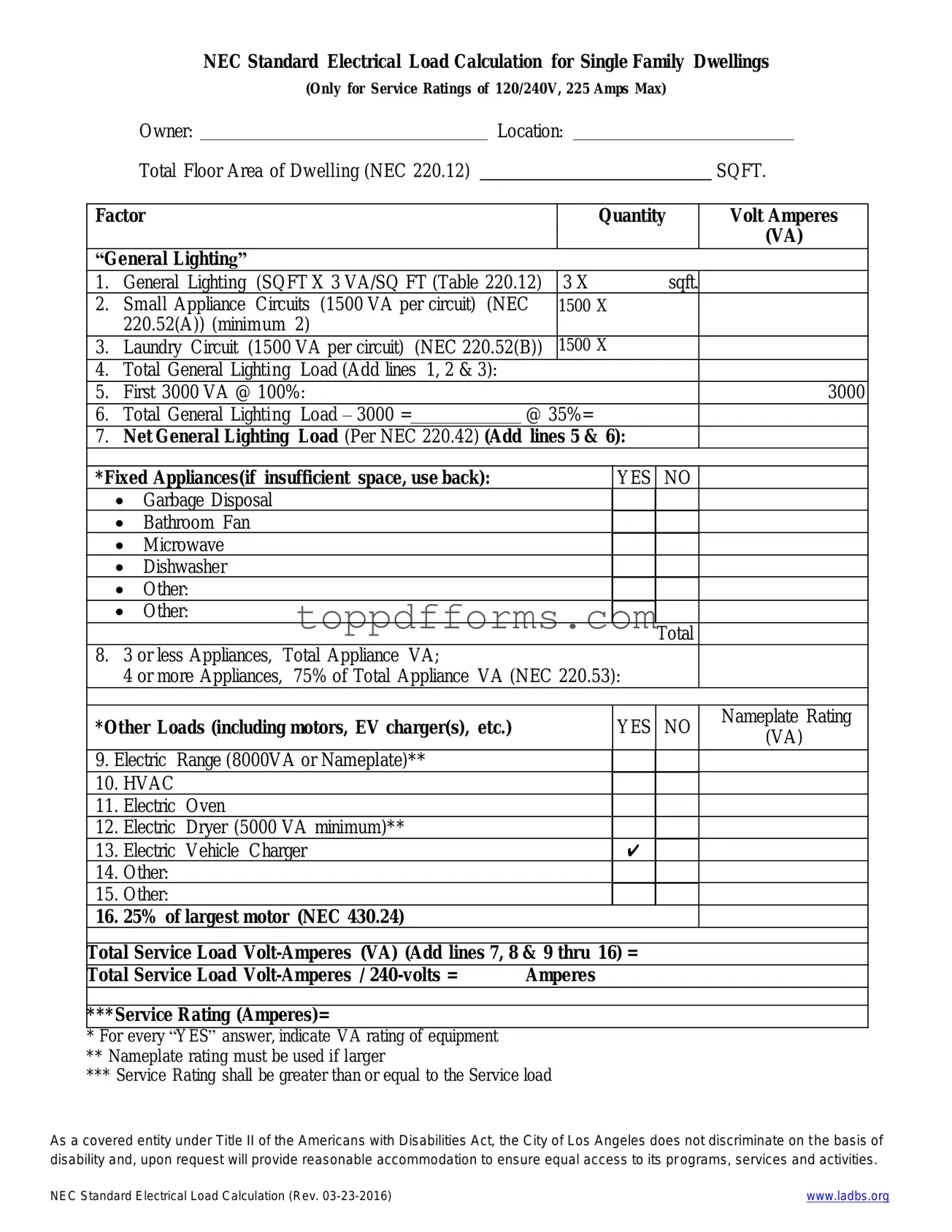Completing the LADBS NEC Standard Electrical Load Calculation form can be a daunting task, and many individuals make common mistakes that can lead to delays or complications in their projects. One prevalent error is failing to accurately assess the total load. It's crucial to consider all electrical appliances and equipment that will be used in the building. Underestimating this load can result in inadequate service capacity.
Another frequent mistake is neglecting to account for future expansion. If you only calculate the current needs without considering potential growth, you may find yourself needing to upgrade your electrical system sooner than anticipated. This oversight can lead to increased costs and unnecessary work down the line.
People often overlook the importance of using the correct demand factors. The NEC provides specific demand factors for various types of loads, and using incorrect values can skew your calculations. This mistake can lead to either overloading the system or underutilizing the available capacity.
Additionally, many individuals fail to include all branch circuits in their calculations. Each circuit contributes to the overall load, and excluding any can result in a significant miscalculation. Ensure that every circuit is accounted for to create a comprehensive load analysis.
Another common error involves miscalculating the square footage of the space. Accurate measurements are essential for determining the appropriate load calculations. If the square footage is underestimated, the resulting calculations may not reflect the true electrical needs of the space.
Some people also forget to consider the diversity of loads. The NEC allows for certain load reductions based on diversity, meaning not all appliances will be used at maximum capacity simultaneously. Failing to apply these diversity factors can lead to an inaccurate assessment of electrical needs.
Inadequate documentation can also hinder the process. It’s essential to provide supporting information and calculations when submitting the form. Without proper documentation, your submission may be questioned or rejected, leading to delays in your project.
Lastly, individuals sometimes submit the form without thoroughly reviewing it for errors. Simple mistakes, such as typos or incorrect figures, can have significant consequences. A careful review can prevent unnecessary complications and ensure that your calculations are accurate.
